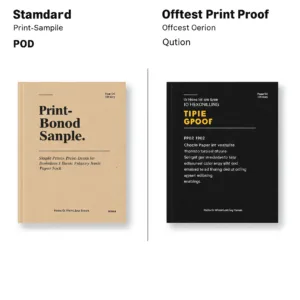Ready to take your self-published book to the next level? Learn if self-publishing can transform into traditional publishing and discover the exact steps authors need to take. This guide details how to operate the transition, from assessing your readiness to navigating contracts and landing that coveted deal.
Self-publishing can transform into traditional publishing, though it requires strategy. Authors typically need strong sales data, a professional manuscript, and often a literary agent. Key steps involve assessing readiness, choosing a pitch strategy (existing book vs. new manuscript), preparing materials like a book proposal, and navigating contract negotiations.
This article breaks down exactly how to prove your market value, choose the best strategic path (including how to operate with agents and publishers), understand contracts, and manage realistic expectations for making the successful self-publishing transform into traditional publishing. Dive deeper to get the complete blueprint, insider tips, and essential resources you need.
Why Consider the Leap?
So, why might you, a successful self-published author, consider diving into the world of traditional publishing? It often comes down to a few key factors that resonate deeply with authors looking to elevate their careers.
- Wider Reach and Validation: Let’s face it, seeing your book on the shelves of a major bookstore or library carries a certain weight. Traditional publishers have established distribution networks that can place your work in front of readers who might never find it online. This broader exposure often comes with increased industry recognition and a sense of validation.
- Access to Publisher Resources: Imagine having a dedicated team for professional editing, striking cover design, and focused marketing campaigns. Traditional publishers invest their resources into these areas, potentially freeing you up to focus more on what you do best – writing. They handle the complexities of printing, warehousing, and distribution.
- Potential for Broader Opportunities: A traditional deal can open doors to subsidiary rights, such as film, television, or foreign translation deals, which publishers actively pursue. Furthermore, the upfront payment known as an advance can provide some financial stability, though it comes with its own set of considerations regarding future royalties.
Of course, this path isn’t without its trade-offs. You’ll generally have less creative control, receive a smaller percentage of royalties per sale, and navigate a much slower production timeline compared to the immediacy of self-publishing. Understanding these Self-Publishing Pros & Cons is the first step in deciding if this leap is right for you.
Are You and Your Book Truly Ready for the Traditional Leap?
Before you start drafting query letters, it’s essential to take an honest look at whether your self-published work and your author platform meet the general expectations of traditional publishers. While there are always exceptions, understanding the typical benchmarks can save you time and effort.
Assessing Your Market Validation

Publishers are businesses, and they need convincing evidence that a book has strong market appeal before investing. While raw sales numbers are crucial, it’s not the only metric they consider.
- Sales Performance: Have you sold a significant number of copies? Industry insiders often mention benchmarks ranging from several thousand copies minimum up to 10,000 or even 15,000 units as figures that start to attract attention. Remember, these aren’t hard-and-fast rules, but strong sales demonstrate proven reader interest.
- Sales Velocity & Consistency: Did your book have a huge launch week and then drop off, or has it shown sustained sales over time? Consistent performance is often more appealing.
- Reader Reviews & Rankings: High average review scores (think 4.5 stars or more on major platforms like Amazon and Goodreads) coupled with a substantial number of reviews matter. Strong, consistent rankings within your specific genre or subcategory also provide powerful social proof.
- Audience Engagement: For series, demonstrating strong “read-through” rates (readers moving from one book to the next) is compelling data.
It’s also worth considering your book’s niche. If you’ve achieved high sales but in a very narrow market, publishers might weigh whether that market is already saturated or if there’s potential for broader reach.
Evaluating Your Book’s Professionalism
Your book needs to be presented professionally, signaling that you take your writing career seriously.
- Editing and Quality: Has your book undergone rigorous professional editing, including both developmental (story structure, pacing) and copyediting (grammar, style), helping you avoid some of the Top Self-Publishing Mistakes? Thorough proofreading is also non-negotiable.
- Presentation: While a traditional publisher will likely create a new cover and interior layout, your self-published version’s formatting and design should still look polished. It reflects your attention to detail.
- Readiness for Change: Understand that even a successful self-published book will almost certainly undergo further editorial revisions if picked up. Publishers need to align the book with their standards and market strategy – view it as a potential redevelopment, not just a simple reprint.
The Power of Your Author Platform

Publishers aren’t just buying a manuscript; they’re often investing in an author’s ability to connect with readers. A strong author platform signals that you have a built-in audience and marketing capabilities, a crucial element detailed in many guides on building author visibility.
- Engaged Following: Do you have an active email list with good open and click-through rates? Are your social media channels engaging, not just broadcasting?
- Online Presence: Does your author website look professional and attract traffic?
- Marketing Savvy: Can you demonstrate successful marketing efforts, whether through ads, collaborations, or other promotional activities? Publishers value authors who are active partners in promotion because a strong platform demonstrates more than just potential reach, it shows a proven connection with readers.
Self-Assessment Checklist
- Sales: Have you achieved sales figures generally considered significant within your genre?
- Reviews: Does your book have strong average ratings and a healthy number of reviews?
- Quality: Has the book been professionally edited and proofread?
- Platform: Do you have an engaged audience and a demonstrable online presence?
- Rights: Do you hold the necessary publishing rights, understanding the Benefits of Copyright Registration, to offer them to a traditional publisher?
Considering these points honestly will help you gauge your readiness for the next steps in potentially pursuing a traditional publishing deal.
How to Approach Traditional Publishers
Once you’ve assessed your readiness, the next step is figuring out the best way to get your work in front of the right people. There isn’t just one way to do this; consider which strategy aligns best with your situation.
Path 1: Pitching Your Existing Self-Published Bestseller
This is often the dream scenario – taking the book that’s already found success and getting a traditional publisher to pick it up for wider distribution.
- When It Might Work: This path typically requires exceptionally strong performance (think tens of thousands of copies sold, consistently high rankings, significant buzz) and a clear argument for an untapped market, such as reaching readers through physical bookstores where your book isn’t currently available.
- The Hurdle: Many traditional publishers strongly prefer “first publishing rights,” meaning they want to be the first to bring a book to market. Pitching an already-published book means overcoming this preference, which industry professionals often describe as the “hardest route.” You’ll need an airtight case, backed by compelling data, presented in a professional book proposal.
Path 2: Leveraging Success to Pitch a New Manuscript
For many authors, this proves to be a more viable strategy. Instead of pitching the book that’s already out there, you use your self-publishing track record to help sell a brand-new, unpublished manuscript.
- Why It’s Often Preferred: As author and former literary agent Nathan Bransford notes, “Unless a self-published book really, seriously takes off… it’s more likely that agents and publishers would be more interested in a new, non-sequel book of yours that you can pitch fresh.” It allows the publisher to acquire first rights and shape the book from an earlier stage.
- How to Frame It: In your query letter and proposal for the new book, you can briefly mention your previous self-publishing success (e.g., “My independently published debut novel sold X copies and garnered over Y reviews with an average Z-star rating”). This demonstrates your ability to write engagingly, connect with readers, and understand the market, making you a less risky prospect than a completely unknown debut author.
The Crucial Role of the Literary Agent

Regardless of the path you choose, securing a literary agent is highly recommended, especially when transitioning from self-publishing.
- Why an Agent is Key: Agents have industry contacts, understand complex contracts, and act as your advocate during negotiations.
- Finding the Right Agent: Look for agents who specifically mention an interest in authors with established platforms or those who have experience representing “hybrid” authors (authors who both self-publish and traditionally publish).
Crafting a Compelling Query Letter
Whether pitching your existing work or a new manuscript, your query letter needs to be professional and persuasive, following query letter best practices to make the best possible impression.
If pitching a new book (Path 2), focus primarily on that story, adding just a brief, impactful mention of your relevant self-publishing achievements towards the end.
Navigating the Traditional Publishing Deal

Getting a “yes” or even a “tell me more” is exciting, but it’s just the beginning of the process. Understanding the next steps, from submitting materials to negotiating contracts, is crucial.
Demystifying the Book Proposal
While fiction is often sold on a full manuscript (especially via an agent), if you’re pitching a previously self-published book (fiction or non-fiction), you’ll likely need a comprehensive book proposal. This document is your business case.
- Key Components: It typically includes a detailed overview of the book, market analysis (including comparable traditional titles), a breakdown of your target audience, specifics about your author platform, and crucially, verifiable data on your self-publishing success.
- Leverage Your Data: This concrete data is a powerful advantage. Don’t just list sales figures; strategically leverage your unique self-publishing data – present curated insights from KDP reports, ad performance, reader demographics from your email list, or even A/B test results for covers – to persuasively demonstrate your market understanding and reduce the publisher’s perceived risk.
Understanding Publishing Contracts
A publishing contract is a complex legal document, and understanding the Essential Clauses in Book Contracts is vital. Don’t skim it! Ideally, have an agent or a publishing-savvy lawyer review it. Key areas to understand include:
- Rights Granted: Be crystal clear on which rights you are granting (e.g., North American print rights, world ebook rights, audio rights, film/TV). Are you retaining any rights, perhaps for direct ebook sales? Understand the difference between granting first rights versus reprint rights.
- Royalties and Advances: You’ll see lower royalty percentages per book (often 10-15% for print, maybe 25% for ebooks) compared to self-publishing. An advance is an upfront payment against these future royalties; you won’t receive further royalty payments until the advance has “earned out.”
- Reversion Clause: This critical clause outlines conditions under which the rights revert back to you, usually if the book goes out of print or sales fall below a certain level for a set period.
- Creative Control: Contracts usually give the publisher final say on title, cover design, and editorial changes. Be prepared for this shift in control.
- Red Flags: Watch out for vague language or clauses that grant “all rights” in perpetuity.
Collaborating (or Contending) with Your Editor
As mentioned earlier, expect revisions. Even wildly successful self-published books undergo editing when moving to a traditional house. Their team will work to align the book with their editorial standards, brand, and target audience. Approach this as a collaboration, be open to feedback, but also be prepared to discuss changes thoughtfully, especially if you feel they compromise the core of your work.
Balancing Lower Royalties with Potential Upside
Yes, the per-book royalty rate is lower. However, weigh this against the potential benefits:
- The Advance: Provides upfront income.
- Wider Reach: Potentially higher volume of sales due to broader distribution.
- Subsidiary Rights: Income from translations, film deals, etc., negotiated by the publisher/agent.
- Brand Building: Increased visibility can boost your overall author career and potentially drive sales of your other (perhaps still self-published) books.
FAQ
It’s completely normal to have concerns when considering such a significant career move. Let’s address some of the most common questions and fears self-published authors have about transitioning to traditional publishing.
Q: Will traditional publishers see my book as “used goods”?
A: It’s true that publishers generally prefer “first rights.” However, the landscape is changing. Increasingly, publishers recognize that a self-published book with proven, significant market success is actually a de-risked asset. Your strong sales data and established readership serve as powerful proof of concept. While market saturation for niche books can be a consideration, demonstrated success often speaks louder than the simple fact that the book was previously available.
Q: How do I cope with lower royalty rates?
A: This is a valid concern, as traditional royalty rates (often 10-25% depending on format) are significantly lower than self-publishing rates (up to 70%). The key is to look at the overall potential. Consider:
- The upfront security of the advance.
- Potential for much higher volume of sales due to wider distribution, possibly leading to greater overall income.
- Value of subsidiary rights (film, foreign) often handled by the publisher/agent
- Strategic options like retaining certain rights (e.g., ebook, like Hugh Howey) or negotiating a higher advance based on proven sales
- Long-term brand value leading to other opportunities.
Q: What if the publisher demands changes I hate? How much control will I lose?
A: You will cede significant creative control. Publishers typically have the final say on the title, cover design, and editorial direction. While the process should ideally be collaborative, be prepared for changes you might not initially agree with. Your best approach is to:
- Choose an agent and editor/imprint known for being author-friendly and whose vision seems aligned with yours.
- Engage in respectful dialogue during the editing process, using data (e.g., reader feedback on certain elements) to support your points where possible.
- Understand that compromise is part of the deal.
Q: Does self-publishing first hurt my chances compared to debuting traditionally?
A: Pitching a book that’s already been published is generally harder than pitching a fresh manuscript. However, having a successful self-publishing track record when you pitch a new book can absolutely be an advantage. It shows agents and publishers that you’re not a complete unknown – you have proven you can write a book readers want, connect with an audience, and understand the market. It demonstrates experience and reduces their perceived risk.
Conclusion
Making the decision about whether self-publishing can transform into traditional publishing for your specific career is a significant one. As we’ve explored, the path exists, but it demands careful consideration and strategic action.







